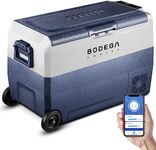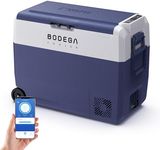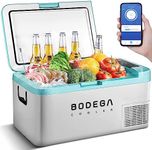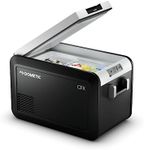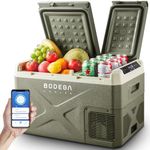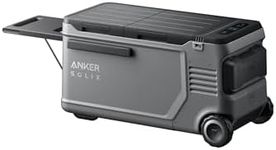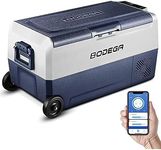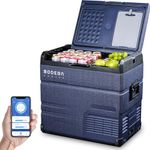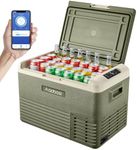Buying Guide for the Best Electric Coolers For Cars
Choosing the right electric cooler for your car can make road trips, camping, or long drives much more comfortable and convenient. The best cooler for you will depend on how you plan to use it, how much space you have in your vehicle, and how much food or drink you need to keep cool. Understanding the key features and specifications will help you find a model that fits your needs and ensures your items stay fresh and chilled while you're on the go.Capacity (Liters or Quarts)Capacity refers to how much the cooler can hold, usually measured in liters or quarts. This is important because it determines how much food and drink you can store at once. Small coolers (under 20 liters) are great for solo travelers or short trips, while medium sizes (20-40 liters) suit couples or small families. Large coolers (over 40 liters) are best for group outings or longer journeys. Think about how many people you need to serve and how long you'll be away from other refrigeration options to choose the right size for your needs.
Cooling Method (Thermoelectric, Compressor, Absorption)Electric coolers use different methods to keep things cold. Thermoelectric coolers are lightweight and affordable, but they usually cool only to a certain degree below the outside temperature, making them best for mild climates or short trips. Compressor coolers work like a mini fridge and can reach much lower temperatures, even freezing items, which is ideal for longer trips or hotter environments. Absorption coolers can run on multiple power sources but are less common. Consider where and how you'll use the cooler—if you need to keep things very cold or frozen, a compressor model is best, while thermoelectric is fine for basic cooling.
Power Source (12V DC, 110V AC, Battery, Solar)The power source tells you how the cooler gets its energy. Most car coolers plug into your vehicle's 12V DC outlet (cigarette lighter), which is convenient for travel. Some models also work with standard 110V AC outlets for use at home or in hotels, and a few can run on batteries or solar panels for off-grid use. If you plan to use the cooler only in your car, 12V is enough, but if you want flexibility for camping or home use, look for models with multiple power options.
Temperature RangeThe temperature range shows how cold (or sometimes warm) the cooler can get. Some coolers can only chill items, while others can freeze them. If you just need to keep drinks and snacks cool, a basic chilling range is fine. If you want to store ice cream or frozen meals, look for a cooler that can reach freezing temperatures. Match the temperature range to the types of food and drinks you plan to bring.
Portability and SizePortability covers how easy it is to move and fit the cooler in your car. Consider the cooler's weight, handles, wheels, and overall dimensions. If you have a small car or limited trunk space, a compact and lightweight model is best. For larger vehicles or if you need to move the cooler over longer distances, look for sturdy handles and wheels. Think about where you'll store the cooler when not in use, too.
Energy EfficiencyEnergy efficiency tells you how much power the cooler uses. More efficient coolers will put less strain on your car's battery, which is important if you plan to run the cooler for long periods without the engine running. Look for models with good insulation and low power consumption, especially if you'll be using the cooler while parked or camping.
Additional Features (Digital Controls, Dual Zones, USB Ports)Some coolers come with extra features like digital temperature controls, separate compartments for cooling and freezing (dual zones), or USB ports for charging devices. These features can add convenience and flexibility, but may not be necessary for everyone. Think about which extras would actually make your trips easier or more enjoyable, and focus on those when comparing models.
